-
Climate breaks multiple records in 2016, with global impacts
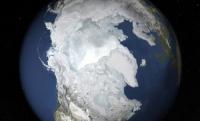
The year 2016 made history, with a record global temperature, exceptionally low sea ice, and unabated sea level rise, and ocean heat, according to the World Meteorological Organization (WMO). Extreme weather and climate conditions have continued into 2017. WMO Secretary-General Petteri Taalas said that the increased power of computing tools and the availability of long term climate data have made it possible today, through attribution studies, to demonstrate clearly the existence of links between man-made climate change and many cases of high impact extreme events in particular heatwaves.
-
-
Evaluating critical mineral-resource potential in Alaska
A new method for evaluating the resource potential for large, underexplored regions for critical minerals in Alaska is now available online. Critical minerals are used in products that are vital to national security, technology, and also play an integral role in our everyday modern life.
-
-
The challenge of sustainable mineral supply
An international team of researchers says global resource governance and sharing of geoscience data is needed to address challenges facing future mineral supply. Specifically of concern are a range of technology minerals, which are an essential ingredient in everything from laptops and cell phones to hybrid or electric cars to solar panels and copper wiring for homes. However, base metals like copper are also a matter of immense concern.
-
-
As the world ends, people remain calm and prosocial: Video-game study

As the world ends, will you lock arms and sing “Kumbayah” or embark on a path of law-breaking, anti-social behavior? A new study, based upon the virtual actions of more than 80,000 players of the role-playing video game ArcheAge, suggests you will be singing. “We realize that, because this is a video game, the true consequences of the world ending are purely virtual. That being said, our dataset represents about as close as we can get to an actual end-of-the-world scenario,” says one researcher.
-
-
Nextgen robots for nuclear clean-up
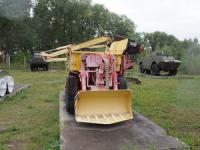
The cost of cleaning up the U.K.’s existing nuclear facilities has been estimated to be between £95 billion, and £219 billion over the next 120 years or so. The harsh conditions within these facilities means that human access is highly restricted and much of the work will need to be completed by robots. Present robotics technology is simply not capable of completing many of the tasks that will be required. A research a consortium to build the next generation of robots that are more durable and perceptive for use in nuclear sites.
-
-
Extreme sea levels could endanger European coastal communities
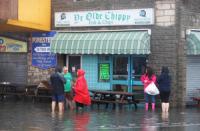
Massive coastal flooding in northern Europe that now occurs once every century could happen every year if greenhouse gas emissions continue to rise, according to a new study. New projections considering changes in sea level rise, tides, waves and storm surge over the twenty-first century find global warming could cause extreme sea levels to increase significantly along Europe’s coasts by 2100. Extreme sea levels are the maximum levels of the sea that occur during a major storm and produce massive flooding.
-
-
Examining susceptibility to cyberattacks through brain activity, eye gaze
New research examines internet users’ susceptibility and ability to detect cybercriminal attacks by analyzing a user’s brain activity and eye gaze while they are performing security related tasks. “Keeping computer systems and networks secure often relies upon the decisions and actions of those using the system,” one researcher says. “Therefore, it is vital to understand users’ performance and behavior when an attack such as phishing or malware occurs. The analysis of neural activations depicts the users’ decision-making capacities, attention and comprehension of the security tasks.”
-
-
Louisiana wetlands threatened by with sea-level rise four times the global average
Without major efforts to rebuild Louisiana’s wetlands, particularly in the westernmost part of the state, there is little chance that the coast will be able to withstand the accelerating rate of sea-level rise, a new study concludes. The study shows that the rate of sea-level rise in the region over the past six to ten years amounts to half an inch per year on average.
-
-
Map shows seawater threat to California Central Coast aquifers
More than half the world’s population lives within 37 miles (60 kilometers) of the coast, and three-quarters of all large cities are located in coastal areas. Many coastal communities rely on groundwater to satisfy their drinking and farming water needs. But removing too much of that groundwater can change the fluid pressure of underground aquifers, drawing seawater into coastal aquifers and corrupting water supplies. Saltwater intrusion is often irreversible. Researchers have transformed pulses of electrical current sent 1,000 feet underground into a picture of where seawater has infiltrated freshwater aquifers along the Monterey Bay coastline.
-
-
Detecting weapons-grade uranium from afar
It is hard enough to identify nuclear materials when you can directly scan a suspicious suitcase or shipping container. But if you cannot get close? A technique for detecting enriched uranium with lasers could help regulators sniff out illicit nuclear activities from as far as a couple of miles away.
-
-
Reusable sponge could revolutionize oil spill and diesel cleanup
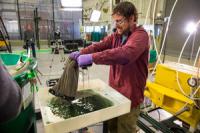
When the Deepwater Horizon drilling pipe blew out seven years ago, beginning the worst oil spill in U.S. history, those in charge of the recovery discovered a new wrinkle: the millions of gallons of oil bubbling from the sea floor weren’t all collecting on the surface where it could be skimmed or burned. Some of it was forming a plume and drifting through the ocean under the surface. Now, scientists have invented a new foam, called Oleo Sponge, that addresses this problem.
-
-
Purifying wastewater with sunlight
Chemists have found a way to use sunlight to purify wastewater rapidly and cheaply, and to make self-cleaning materials for buildings. The technology uses modified titanium dioxide as a photocatalyst that works with sunlight, unlike other leading water purification products on the market that need ultraviolet light.
-
-
Knowledge gaps on protecting cultural sites from climate change
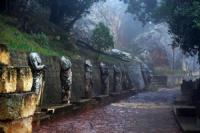
Researchers searched worldwide for peer-reviewed studies of cultural resources – archaeological sites, natural landscapes, and historic buildings — at risk due to climate change. About 60 percent of the studies referenced sites in Europe, most commonly in the United Kingdom. Another 17 percent of the research covered sites in North America, a majority of them in the United States. About 11 percent dealt with resources in Australia and the Pacific Islands and 10 percent mentioned Asia, mostly China. All but six of the 124 studies were published in English-language journals, with South America and Africa rarely represented in the research. “We see a significant gap in knowledge of how to adapt to climate change and preserve cultural resources for future generations,” says one researcher.
-
-
Up to $600 billion in American intellectual property stolen annually
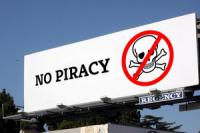
The theft of American intellectual property (IP) remains a systemic threat to the U.S. economy, inflicting an estimated cost that exceeds $225 billion in counterfeit goods, pirated software, and theft of trade secrets and could be as high as $600 billion annually. China remains the world’s principal IP infringer, driven by an industrial policy that continues to prioritize both acquisition and development of science and technology.
-
-
Serious security vulnerabilities found in home, business, industrial robots
Researchers have identified numerous vulnerabilities in multiple home, business, and industrial robots available on the market today. The vulnerabilities identified included many graded as high or critical risk, leaving the robots susceptible to cyberattack. Once a vulnerability has been exploited, a hacker could potentially gain control of the robot for cyber espionage, turn a robot into an insider threat, use a robot to expose private information, or cause a robot to perform unwanted actions when interacting with people, business operations, or other robots. In the most extreme cases, robots could be used to cause serious physical damage and harm to people and property.
-
More headlines
The long view
A Shining Star in a Contentious Legacy: Could Marty Makary Be the Saving Grace of a Divisive Presidency?
While much of the Trump administration has sparked controversy, the FDA’s consumer-first reforms may be remembered as its brightest legacy. From AI-driven drug reviews to bans on artificial dyes, the FDA’s agenda resonates with the public in ways few Trump-era policies have.
Risk Assessment with Machine Learning
Researchers utilize geological survey data and machine learning algorithms for accurately predicting liquefaction risk in earthquake-prone areas.
Foundation for U.S. Breakthroughs Feels Shakier to Researchers
With each dollar of its grants, the National Institutes of Health —the world’s largest funder of biomedical research —generates, on average, $2.56 worth of economic activity across all 50 states. NIH grants also support more than 400,000 U.S. jobs, and have been a central force in establishing the country’s dominance in medical research. Waves of funding cuts and grant terminations under the second Trump administration are a threat to the U.S. status as driver of scientific progress, and to the nation’s economy.
The True Cost of Abandoning Science
“We now face a choice: to remain at the vanguard of scientific inquiry through sound investment, or to cede our leadership and watch others answer the big questions that have confounded humanity for millennia —and reap the rewards.”
Bookshelf: Smartphones Shape War in Hyperconnected World
The smartphone is helping to shape the conduct and representation of contemporary war. A new book argues that as an operative device, the smartphone is now “being used as a central weapon of war.”
New Approach Detects Adversarial Attacks in Multimodal AI Systems
New vulnerabilities have emerged with the rapid advancement and adoption of multimodal foundational AI models, significantly expanding the potential for cybersecurity attacks. Topological signatures key to revealing attacks, identifying origins of threats.
